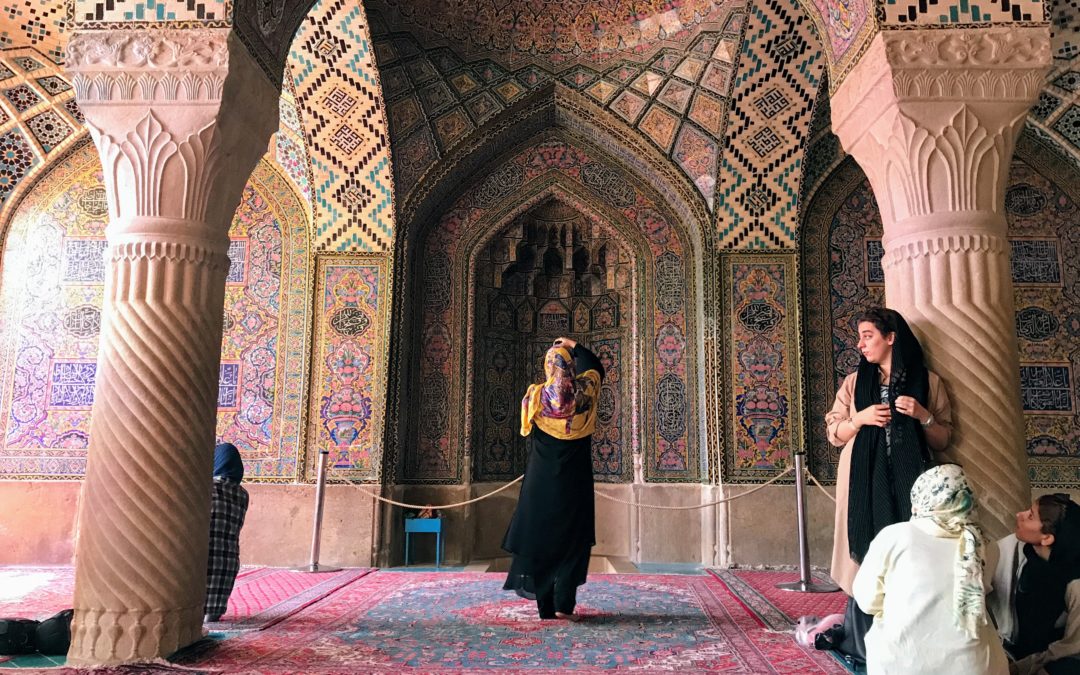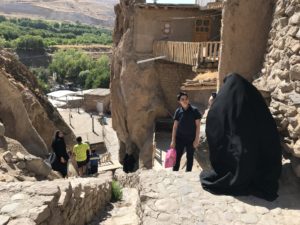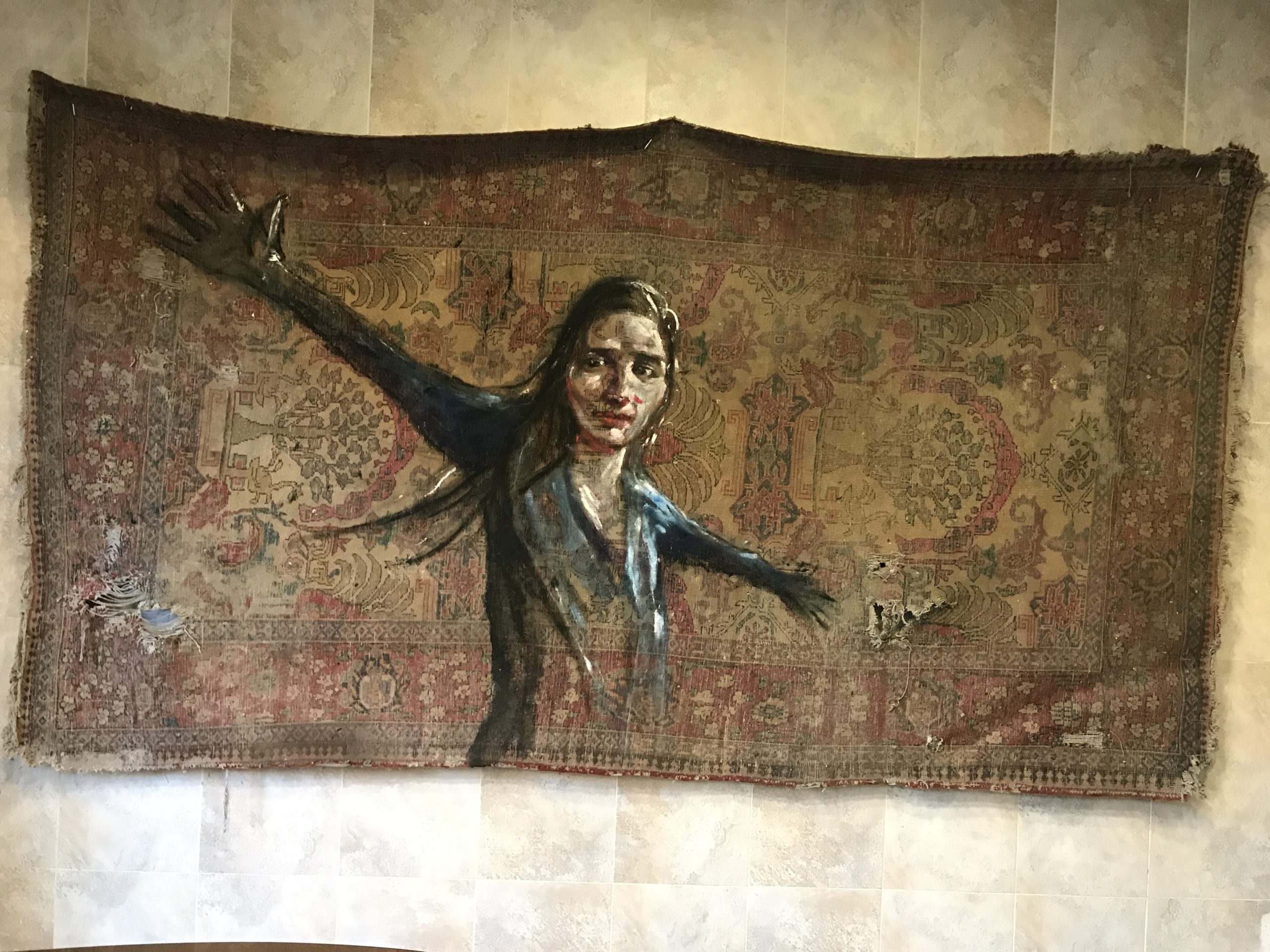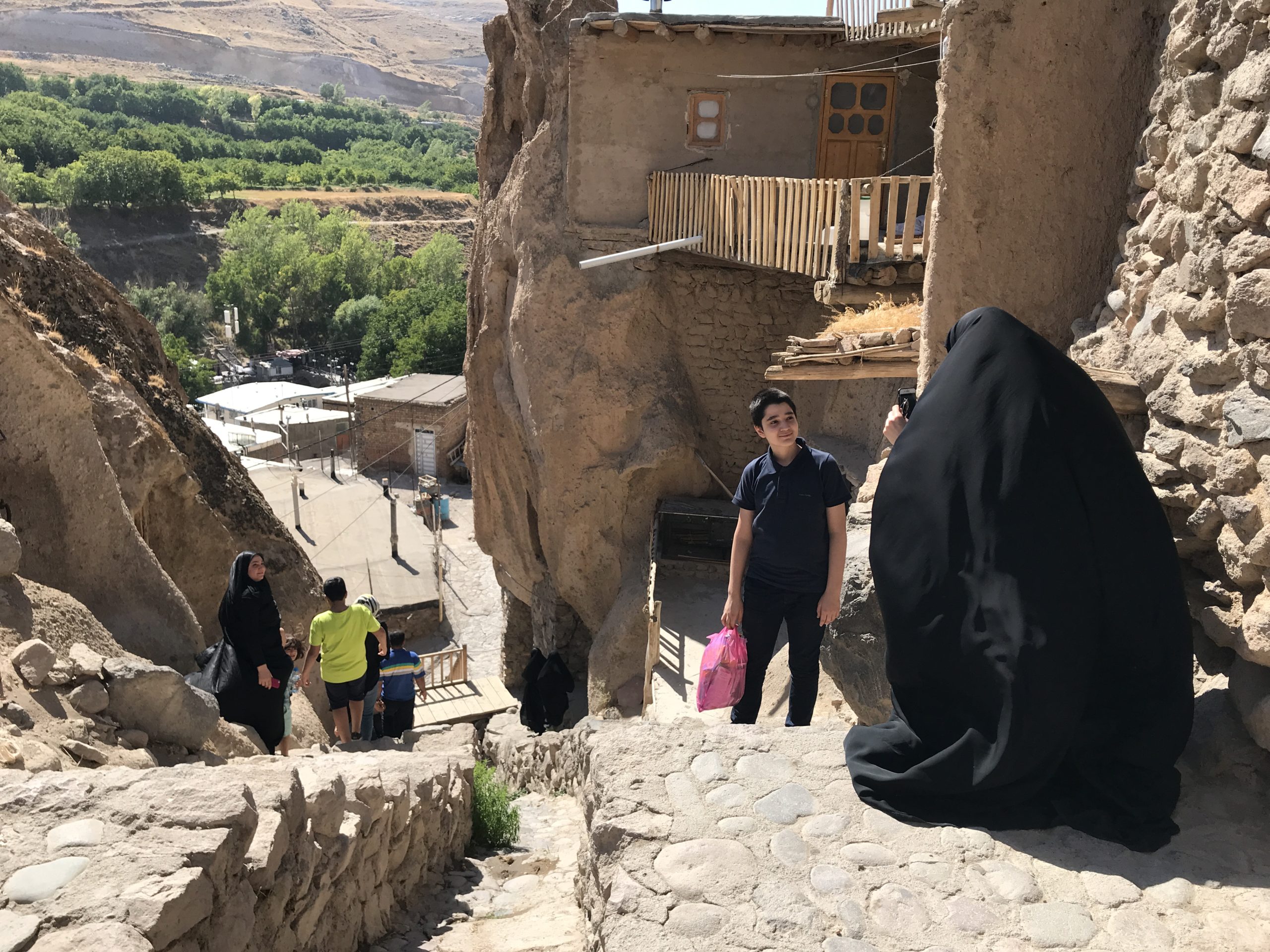All women are forced to wear a hijab in Iran, including female tourists.
As a pro-liberty American, I witnessed the effects of dress code laws while visiting Iran for a month. At times I saw the effortless regularity of women reluctantly covering themselves. At other times, I witnessed underlying tensions boil over in public arguments between Iranian law enforcement and civilians.
By the end of my road trip in Iran, my experience gave me a new frame of reference. I gained a clearer perspective about Iranian men and women, but specifically about the future of the hijab in Iran.
It’s not my intention to depress the reader or to scare them away from visiting Iran. To the contrary, I stand by what I’ve said before:
“Looking back, that month was perhaps the most emotional, unforgettable, and educational experience of my entire life.”
Particularly, my intention is to challenge prevailing, incorrect narratives about Iran. Additionally, I’ll illuminate the true relationship between Iranian men and women, especially surrounding the hijab.
What exactly is the dress code for women in Iran?
Firstly, ‘hijab‘ is an Arabic word which translates as “barrier”. In an Islamic context, if a woman has passed the age of puberty, she needs to put a barrier between herself and all men, except the men in her immediate family.
After a Muslim girl hits puberty, she must cover herself with a hijab, every day, for the rest of her life. In Iran, women must also cover all of the curves of their bodies. In effect, a woman’s very femininity more or less vanishes from the neck down.
The government allows women to wear many different kinds of hijabs in Iran. Of those choices, most women opt to wear a simple headscarf. However, the government prefers that women wear a chador, which is the Persian word for “tent”.
The consequences of disobedience
As a result, all women in Iran would be in trouble if they’re caught not wearing a satisfactory hijab. This is true for all women in Iran, tourists included. Dress code laws could be enforced by any Muslim cleric, the local police, national police, national military, Sepâh (the Supreme Leader’s private military), and/or Basij (the young adult wing of Sepâh).
Accordingly, the consequences could include a simple warning; torture, including up to 74 lashes; and/or up to 15 years in prison.
Oh, by the way…
Undeniably, when comparing dress codes for each sex, restrictions on women’s clothing are much more stringent. As you’ll see later, it’s important to acknowledge the male dress code, as well. Men must cover their legs, usually with pants, jeans, or a traditional, long Persian male dress. If any man refuses to comply, they absolutely run the risk of getting in trouble with the law, too.
5 hijab-related stories from inside Iran
With that context set, I’m glad to share some of the more remarkable moments from my trip. Here are a few of those short stories.
1. Freedom until the last possible moment
My first story truly starts outside of Iran and ends inside Iran. At the airport in Oman, my fellow passengers and I gathered near the gate. While we waited for our flight to Tehran, I made some observations. Half of the women were wearing some variety of hijab. The other half weren’t covering their hair at all. To gain more insight, I paid attention to how the passengers filtered into the immigration lines in Tehran. I’d say about 2/3 of the passengers were Iranian and 1/3 were non-Iranian.
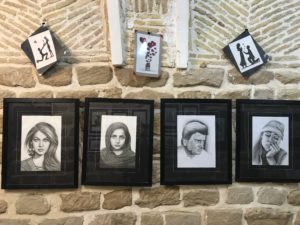
Drawn in pencil by female, Iranian artists. Notice, only one of the five girls in these drawings is wearing a proper hijab.
When our flight landed in Tehran, many of the remaining women instantly put on their headscarves. However, some women waited until the last possible moment to cover up. Immediately before they stepped off the plane and headed to the terminal, they put on their headscarf.
2. Our own private dance club in Iran
One night, I felt like an extra in an epic movie scene! The backdrop: the dining room after dinner at one of our accommodations. There were 14 men and women in attendance. Before I knew it, liberty and ecstasy were in the air. Several times, jokes were made at the expense of Iranian government officials and everybody laughed!
Meanwhile, four of the seven women threw off their headscarves. A couple of women even removed their outer clothing. From the waist up, they were only wearing a t-shirt or blouse and proudly showed off their feminine curves.
That incredibly happy, memorable night continued to evolve. One of the girls played music from her smartphone through her bluetooth speaker and everybody started dancing! Then, one of the men turned off the lights. To create a strobe-light effect for the dance floor, some people used the flashlight on their phone, then waved their hand in front of the flashlight.
Truly, the atmosphere that they spontaneously created together that night was that of a small, private dance club in Iran. I’m so glad they let me join in!
3. Small towns are weak points for the regime
Normally, in any country, the bigger the city, the bigger the police state. Conversely, small towns are more likely to foster gentler, more relaxed law enforcement.
With that in mind, many Iranians who live in big cities find temporary asylum on vacation in small towns.
For example, when I was in Masuleh, I saw many women peacefully walking around without wearing a headscarf. I must point out, none of the men yelled at even a single woman to put their scarf back on. Both the men and women joyously relaxed together.
4. Defiance, enforcement, and public backlash at ‘the pink mosque’
Not once, but twice I saw confrontations with law enforcement at the Nasir-ol-molk Mosque. It’s popularly referred to as ‘the pink mosque’ due to the abundance of pink tiles which fill its interior. Incidentally, the featured image at the top of this post is from inside the pink mosque.

These two women want to look their best. Despite having to cover their hair, they’re shopping for hair coloring in a giant grocery store in Shiraz.
The pink mosque is a must-see tourist attraction in the tourism-based city of Shiraz. Just like with most tourism hot-spots in the world, visitors pose for photos and take pictures of the attraction itself.
Our tranquil visit was interrupted when a man angrily raised his voice. A law enforcement officer had caught one of the women daring to pose for a photo without her headscarf on. Perhaps surrounding herself with the color pink gave her extra inspiration. Whatever the reason, she grudgingly put her scarf back on.
But her gutsy move caused nearby men to immediately stand up for her. The man who was trying to take the girl’s photo shouted down the officer. Other men joined in and the officer slowly backed away.
Minutes later, in a different part of the mosque, the same scene played out again. This time involving different people, but with even more ferocity from each side. How did the second officer respond? He also cowered and walked away.
Whether a tyrant takes the form of a common high school bully or a government thug, they all feed off of their victim’s fear. Furthermore, when ordinary people bravely and confidently stand up, bullies will usually back down.
5. I spoke to a mullah about the hijab in Iran
My 50-minute conversation with a mullah at a mosque in Esfahan was perhaps the most eye-opening moment of my entire trip. Reading about Islam on the internet is one thing. Having a deep, meaningful conversation with an Islamic cleric in Iran is a completely different experience.
For over three years, that mullah’s job has been to answer questions from tourists. Those conversations take place inside the old madrassa at the breathtaking and massive UNESCO Heritage Site, Naqsh-e Jahan Square. Despite our differences, the mullah and I were both very polite and respectful towards each other throughout our talk.
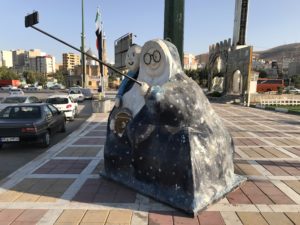
A statue in Kermanshah. The woman is wearing a chador, holding her grandson, and using a selfie stick to take a selfie.
Initially, I softened him with small talk. When the moment was right, I asked, “During your several years at this job, what’s the most challenging question you’ve been asked from other tourists?” Within his answer, he brought up the compulsory hijab. That was the exact topic I was looking for! I didn’t let the subject go until we’d reached what I felt was a conclusion.
Seemingly, it took forever to get some concrete answers to my carefully worded, precise questions. In the end, his circular logic went like this:
- Just as in any country, the people of Iran get the politicians they vote for.
- Anybody can run for office in Iran, as long as they’re a Muslim and have a degree from a college or university.
- However, if a political candidate doesn’t support the compulsory hijab, they’re not a real Muslim. Therefore, the government wouldn’t approve them as a candidate for office in the first place.
What is the future of the hijab in Iran?
Obviously, none of us can see the future. However, based on what I’ve seen, I’ve come up with a few observations that some analysts overlook when discussing the compulsory hijab in Iran.
- Most Iranian men and women are ready to toss off their respective dress codes.
- In Persian culture, it’s very common for a man to defend and protect his woman. Accordingly, most Iranian men genuinely want the women they love to have increased human rights.
- That means, there will certainly come a day when enough Iranian men will support a woman’s right to choose her clothing.
- When that happens, the male dress code will probably be lifted, as well – if it hadn’t been lifted already.
- So, regarding the dress code, most Iranian men and women have a shared goal.
- Lastly, because of their committed religious beliefs, even when the hijab becomes voluntary, some women will still choose to wear a hijab.
I learned all of this and more during my visit to Iran. If you choose to exit your comfort zone as I did, you can expect to have similar experiences and come to similar conclusions. You’ll meet heroic people and absorb life-altering moments that you’ll remember forever. Additionally, you’ll gain perspective that will strengthen your character beyond what you thought was possible.
Go, travel, and let the world change ‘the history of you’!
All women are forced to wear a hijab in Iran, including female tourists.
As a pro-liberty American, I witnessed the effects of dress code laws while visiting Iran for a month. At times I saw the effortless regularity of women reluctantly covering themselves. At other times, I witnessed underlying tensions boil over in public arguments between Iranian law enforcement and civilians.
By the end of my road trip in Iran, my experience gave me a new frame of reference. I gained a clearer perspective about Iranian men and women, but specifically about the future of the hijab in Iran.
It’s not my intention to depress the reader or to scare them away from visiting Iran. To the contrary, I stand by what I’ve said before:
“Looking back, that month was perhaps the most emotional, unforgettable, and educational experience of my entire life.”
Particularly, my intention is to challenge prevailing, incorrect narratives about Iran. Additionally, I’ll illuminate the true relationship between Iranian men and women, especially surrounding the hijab.
What exactly is the dress code for women in Iran?
Firstly, ‘hijab‘ is an Arabic word which translates as “barrier”. In an Islamic context, if a woman has passed the age of puberty, she needs to put a barrier between herself and all men, except the men in her immediate family.
After a Muslim girl hits puberty, she must cover herself with a hijab, every day, for the rest of her life. In Iran, women must also cover all of the curves of their bodies. In effect, a woman’s very femininity more or less vanishes from the neck down.
The government allows women to wear many different kinds of hijabs in Iran. Of those choices, most women opt to wear a simple headscarf. However, the government prefers that women wear a chador, which is the Persian word for “tent”.
The consequences of disobedience
As a result, all women in Iran would be in trouble if they’re caught not wearing a satisfactory hijab. This is true for all women in Iran, tourists included. Dress code laws could be enforced by any Muslim cleric, the local police, national police, national military, Sepâh (the Supreme Leader’s private military), and/or Basij (the young adult wing of Sepâh).
Accordingly, the consequences could include a simple warning; torture, including up to 74 lashes; and/or up to 15 years in prison.
Oh, by the way…
Undeniably, when comparing dress codes for each sex, restrictions on women’s clothing are much more stringent. As you’ll see later, it’s important to acknowledge the male dress code, as well. Men must cover their legs, usually with pants, jeans, or a traditional, long Persian male dress. If any man refuses to comply, they absolutely run the risk of getting in trouble with the law, too.
5 hijab-related stories from inside Iran
With that context set, I’m glad to share some of the more remarkable moments from my trip. Here are a few of those short stories.
1. Freedom until the last possible moment
My first story truly starts outside of Iran and ends inside Iran. At the airport in Oman, my fellow passengers and I gathered near the gate. While we waited for our flight to Tehran, I made some observations. Half of the women were wearing some variety of hijab. The other half weren’t covering their hair at all. To gain more insight, I paid attention to how the passengers filtered into the immigration lines in Tehran. I’d say about 2/3 of the passengers were Iranian and 1/3 were non-Iranian.
When our flight landed in Tehran, many of the remaining women instantly put on their headscarves. However, some women waited until the last possible moment to cover up. Immediately before they stepped off the plane and headed to the terminal, they put on their headscarf.
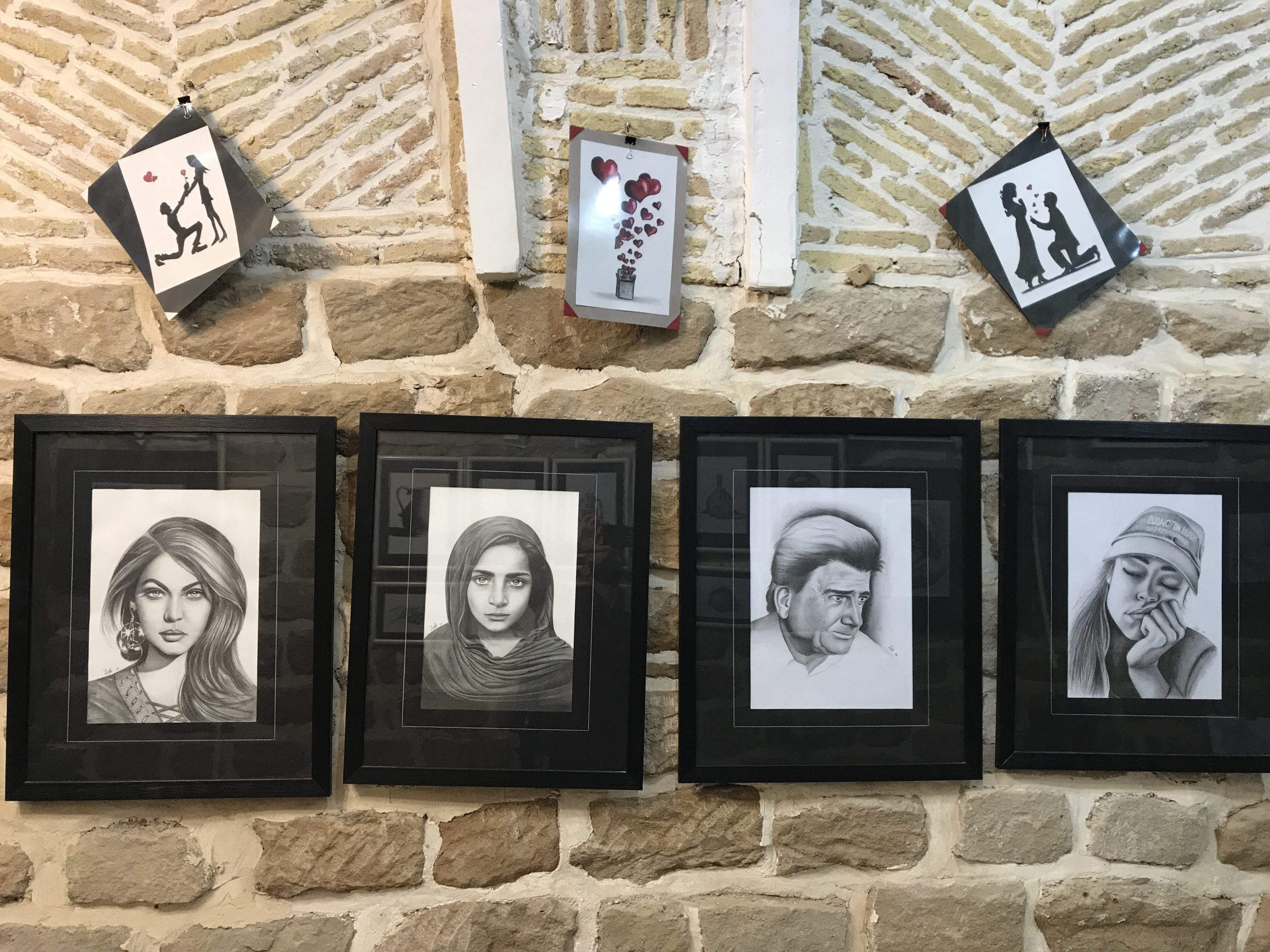
Drawn in pencil by a female, Iranian artists. Notice, only one of the five girls in these drawings is wearing a proper hijab.
2. Our own private dance club in Iran
One night, I felt like an extra in an epic movie scene! The backdrop: the dining room after dinner at one of our accommodations. There were 14 men and women in attendance. Before I knew it, liberty and ecstasy were in the air. Several times, jokes were made at the expense of Iranian government officials and everybody laughed!
Meanwhile, four of the seven women threw off their headscarves. A couple of women even removed their outer clothing. From the waist up, they were only wearing a t-shirt or blouse and proudly showed off their feminine curves.
That incredibly happy, memorable night continued to evolve. One of the girls played music from her smartphone through her bluetooth speaker and everybody started dancing! Then, one of the men turned off the lights. To create a strobe-light effect for the dance floor, some people used the flashlight on their phone, then waved their hand in front of the flashlight.
Truly, the atmosphere that they spontaneously created together that night was that of a small, private dance club in Iran. I’m so glad they let me join in!
3. Small towns are weak points for the regime
Normally, in any country, the bigger the city, the bigger the police state. Conversely, small towns are more likely to foster gentler, more relaxed law enforcement.
With that in mind, many Iranians who live in big cities find temporary asylum on vacation in small towns.
For example, when I was in Masuleh, I saw many women peacefully walking around without wearing a headscarf. I must point out, none of the men yelled at even a single woman to put their scarf back on. Both the men and women joyously relaxed together.

These two women want to look their best. Despite having to cover their hair, they’re shopping for hair coloring in a giant grocery store in Shiraz.
4. Defiance, enforcement, and public backlash at ‘the pink mosque’
Not once, but twice I saw confrontations with law enforcement at the Nasir-ol-molk Mosque. It’s popularly referred to as ‘the pink mosque’ due to the abundance of pink tiles which fill its interior. Incidentally, the featured image at the top of this post is from inside the pink mosque.
The pink mosque is a must-see tourist attraction in the tourism-based city of Shiraz. Just like with most tourism hot-spots in the world, visitors pose for photos and take pictures of the attraction itself.
Our tranquil visit was interrupted when a man angrily raised his voice.. A law enforcement officer had caught one of the women daring to pose for a photo without her headscarf on. Perhaps surrounding herself with the color pink gave her extra inspiration. Whatever the reason, she grudgingly put her scarf back on.
But her gutsy move caused nearby men to immediately stand up for her. The man who was trying to take the girl’s photo shouted down the officer. Other men joined in and the officer slowly backed away.
Minutes later, in a different part of the mosque, the same scene played out again. This time involving different people, but with even more ferocity from each side. How did the second officer respond? He also cowered and walked away.
Whether a tyrant takes the form of a common high school bully or a government thug, they all feed off of their victim’s fear. Furthermore, when ordinary people bravely and confidently stand up, bullies will usually back down.
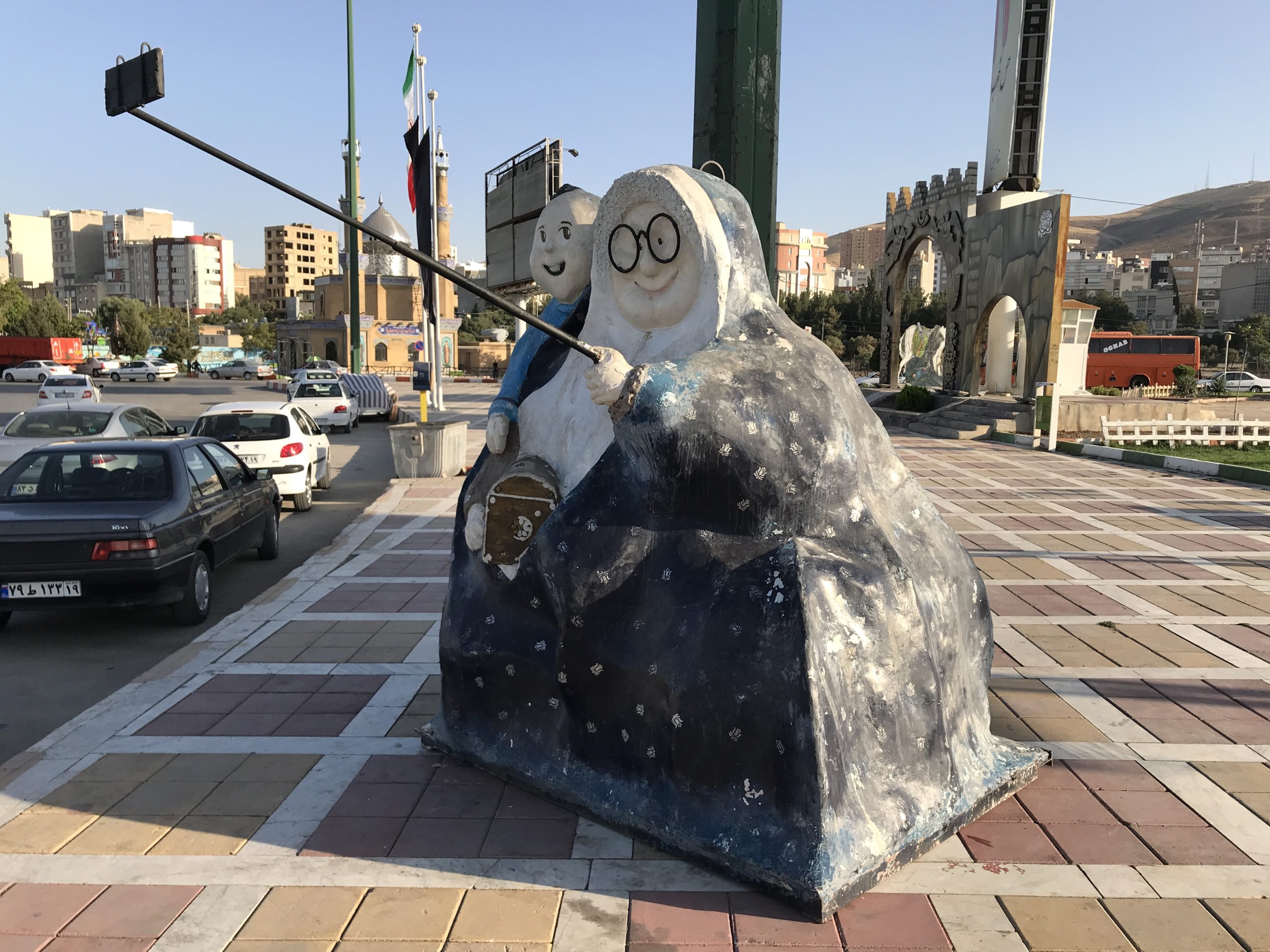
A statue in Kermanshah. The woman is wearing a chador, holding her grandson, and using a selfie stick to take a selfie.
5. I spoke to a mullah about the hijab in Iran
My 50-minute conversation with a mullah at a mosque in Esfahan was perhaps the most eye-opening moment of my entire trip. Reading about Islam on the internet is one thing. Having a deep, meaningful conversation with an Islamic cleric in Iran is a completely different experience.
For over three years, that mullah’s job has been to answer questions from tourists. Those conversations take place inside the old madrassa at the breathtaking and massive UNESCO Heritage Site, Naqsh-e Jahan Square. Despite our differences, the mullah and I were both very polite and respectful towards each other throughout our talk.
Initially, I softened him with small talk. When the moment was right, I asked, “During your several years at this job, what’s the most challenging question you’ve been asked from other tourists?” Within his answer, he brought up the compulsory hijab. That was the exact topic I was looking for! I didn’t let the subject go until we’d reached what I felt was a conclusion.
Seemingly, it took forever to get some concrete answers to my carefully worded, precise questions. In the end, his circular logic went like this:
- Just as in any country, the people of Iran get the politicians they vote for.
- Anybody can run for office in Iran, as long as they’re a Muslim and have a degree from a college or university.
- However, if a political candidate doesn’t support the compulsory hijab, they’re not a real Muslim. Therefore, the government wouldn’t approve them as a candidate for office in the first place.
What is the future of the hijab in Iran?
Obviously, none of us can see the future. However, based on what I’ve seen, I’ve come up with a few observations that some analysts overlook when discussing the compulsory hijab in Iran.
- Most Iranian men and women are ready to toss off their respective dress codes.
- In Persian culture, it’s very common for a man to defend and protect his woman. Accordingly, most Iranian men genuinely want the women they love to have increased human rights.
- That means, there will certainly come a day when enough Iranian men will support a woman’s right to choose her clothing.
- When that happens, the male dress code will probably be lifted, as well – if it hadn’t been lifted already.
- So, regarding the dress code, most Iranian men and women have a shared goal.
- Lastly, because of their committed religious beliefs, even when the hijab becomes voluntary, some women will still choose to wear a hijab.
I learned all of this and more during my visit to Iran. If you choose to exit your comfort zone as I did, you can expect to have similar experiences and come to similar conclusions. You’ll meet heroic people and absorb life-altering moments that you’ll remember forever. Additionally, you’ll gain perspective that will strengthen your character beyond what you thought was possible.
Go, travel, and let the world change ‘the history of you’!

